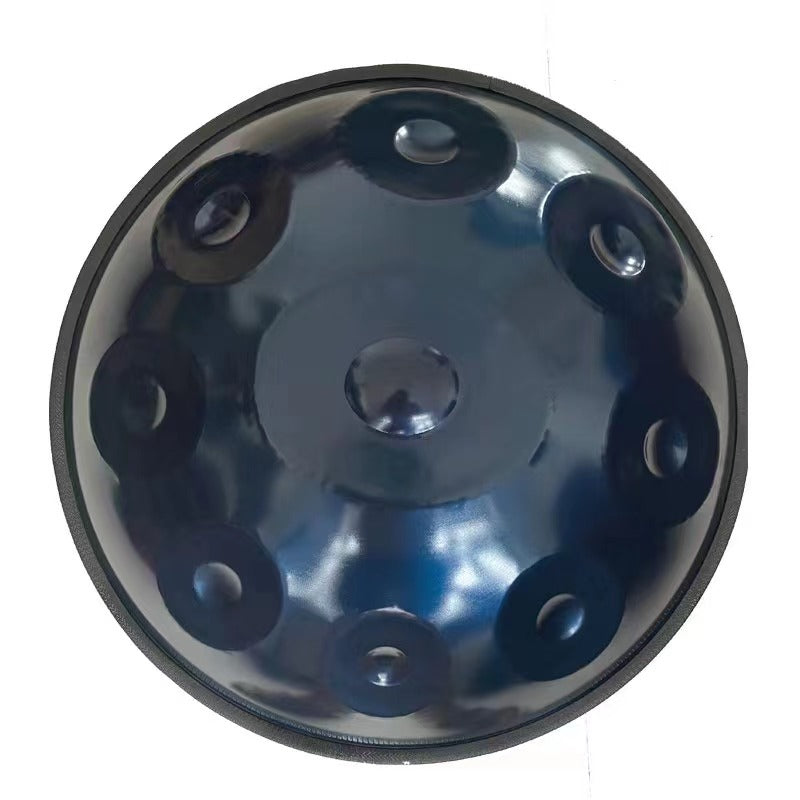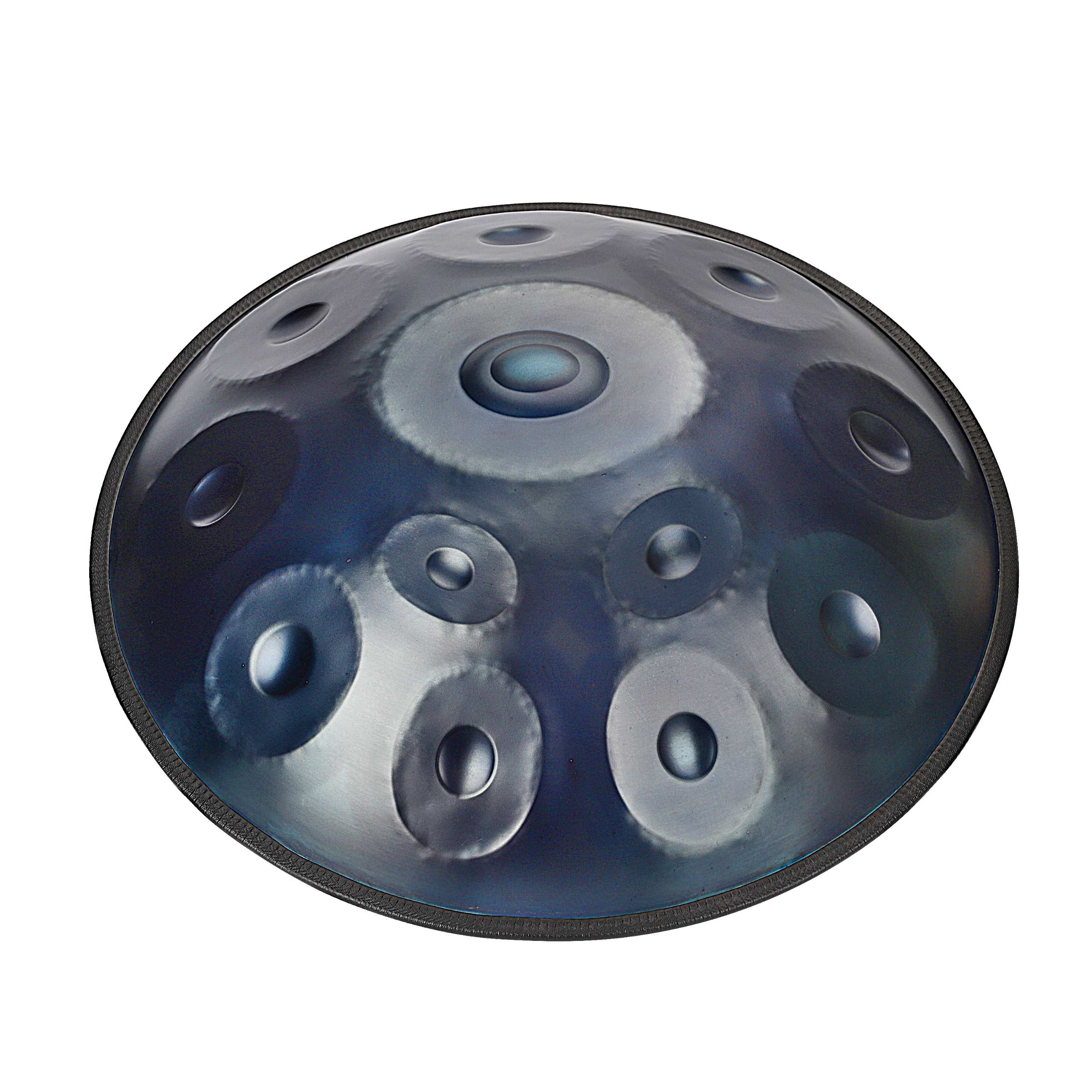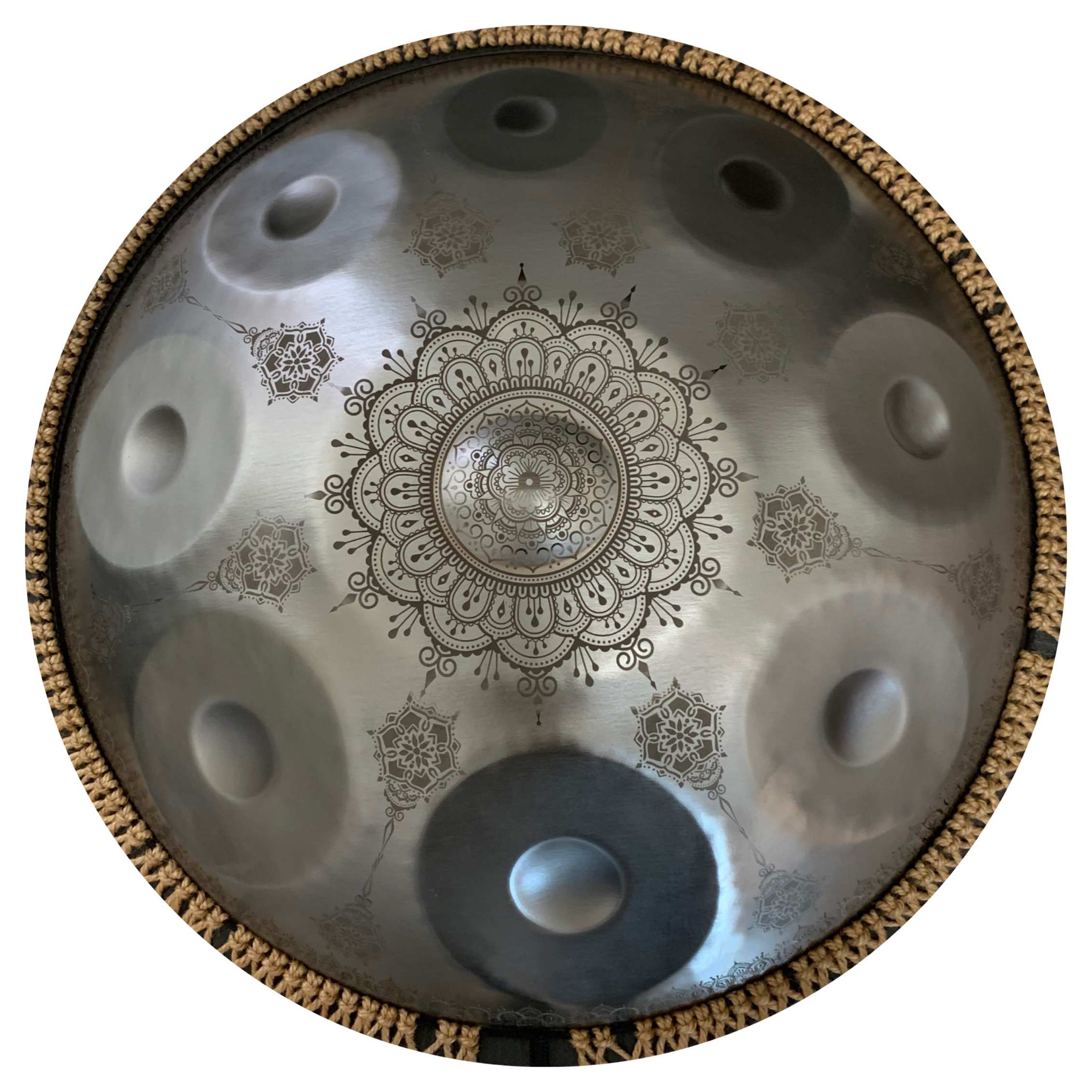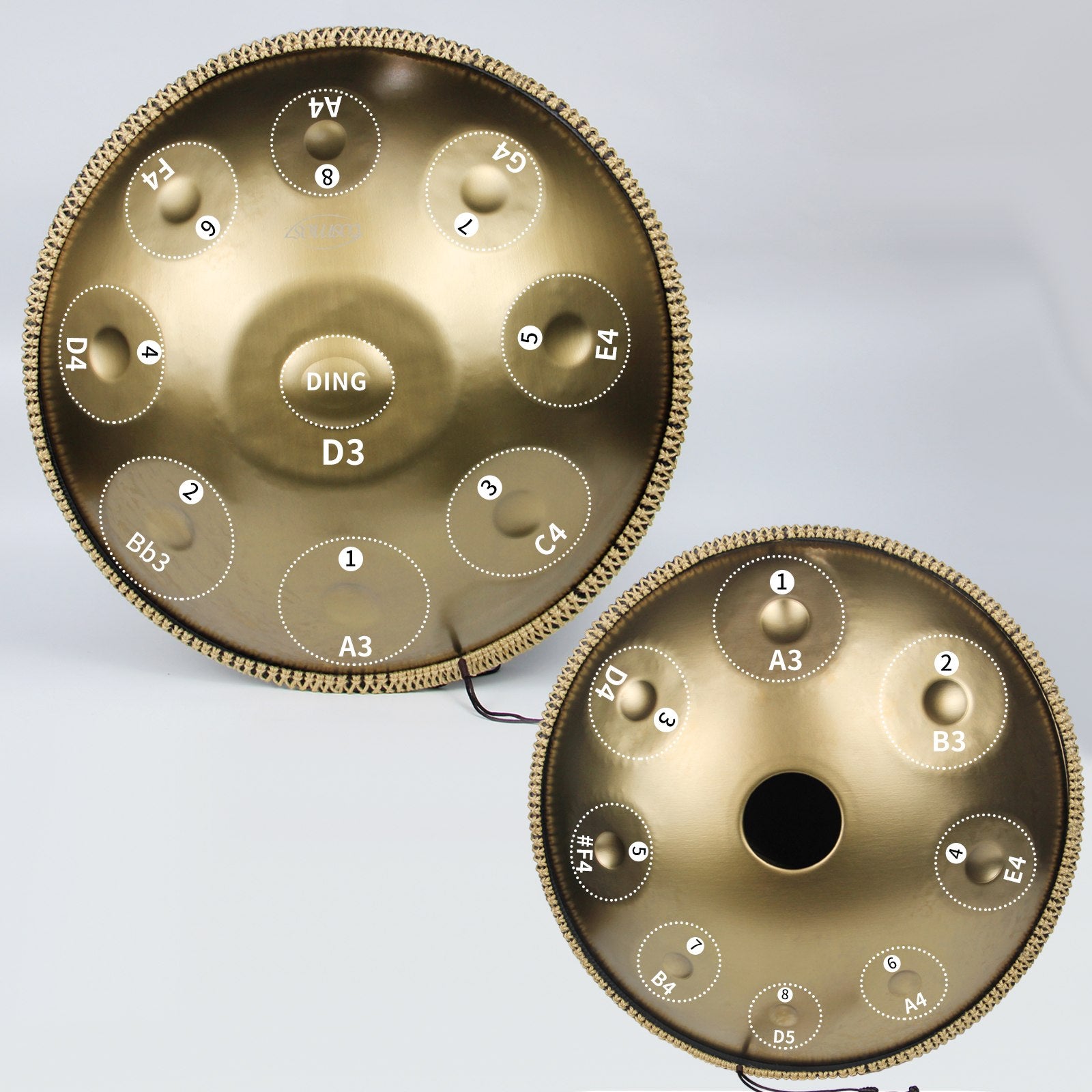The handpan, a captivating and melodious instrument, has gained immense popularity among musicians and music enthusiasts alike. Known for its ethereal sound and unique design, the handpan has a mystique that often leaves people curious about its construction.
- What materials are used to create this enchanting instrument?
- How does its craftsmanship affect its sound?
In this article, we will delve into the intricacies of handpan construction, using the Cosmos Handpan - Tantra Tibetan Series as a prime example to illustrate the craftsmanship behind this fascinating instrument.
The Essence of a Handpan
A handpan is a percussion instrument that produces a harmonious and resonant sound. Its structure is similar to that of a steel drum but is played with the hands instead of mallets. The instrument consists of two metal hemispheres glued together, with the top surface featuring a central note surrounded by several tone fields.
Key Components of a Handpan
- Material: The primary material used in handpan construction is metal, typically steel.
- Shape and Design: Handpans have a convex shape, which contributes to their unique sound.
- Tone Fields: These are the indentations on the surface of the handpan, each producing a different note when struck.
- Dome: The central note, often called the "ding," is located in the center of the instrument's top surface.
Material Matters: High Hardness Stainless Steel
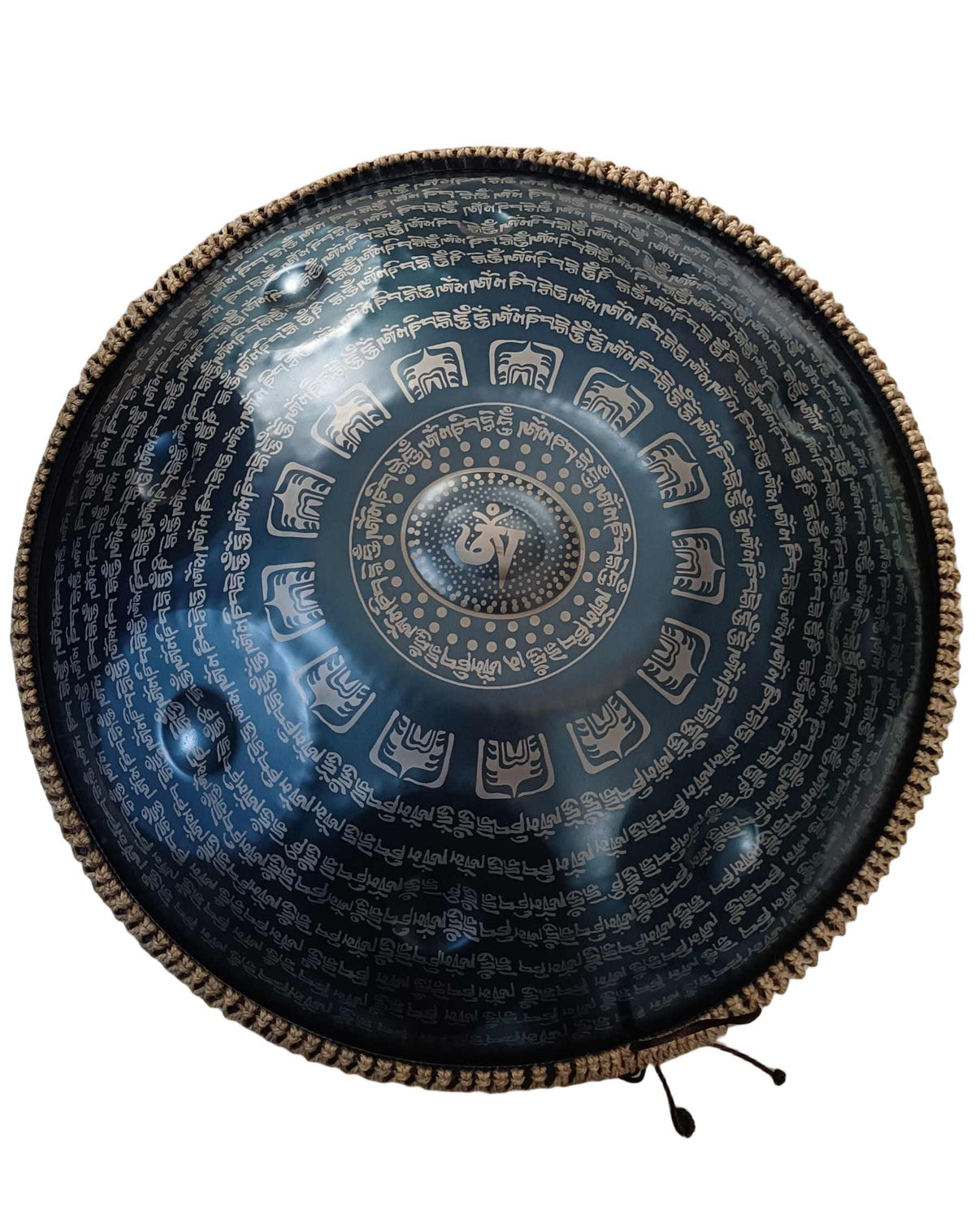
One of the most crucial aspects of a handpan's construction is the material used. The Cosmos Handpan - Tantra Tibetan Series, for instance, is crafted from high hardness stainless steel with a thickness of 1.07 mm. This specific material choice offers several benefits:
- Durability: High hardness stainless steel is known for its strength and resistance to wear and tear. This ensures that the handpan can withstand regular playing without losing its structural integrity.
- Corrosion Resistance: Stainless steel's resistance to rust and corrosion makes it an ideal material for handpans, as it helps maintain the instrument's appearance and sound quality over time.
- Sound Quality: The hardness and density of stainless steel contribute to the handpan's rich and resonant sound. The material allows for precise tuning and maintains the instrument's pitch over time.
The Craftsmanship Behind the Cosmos Handpan
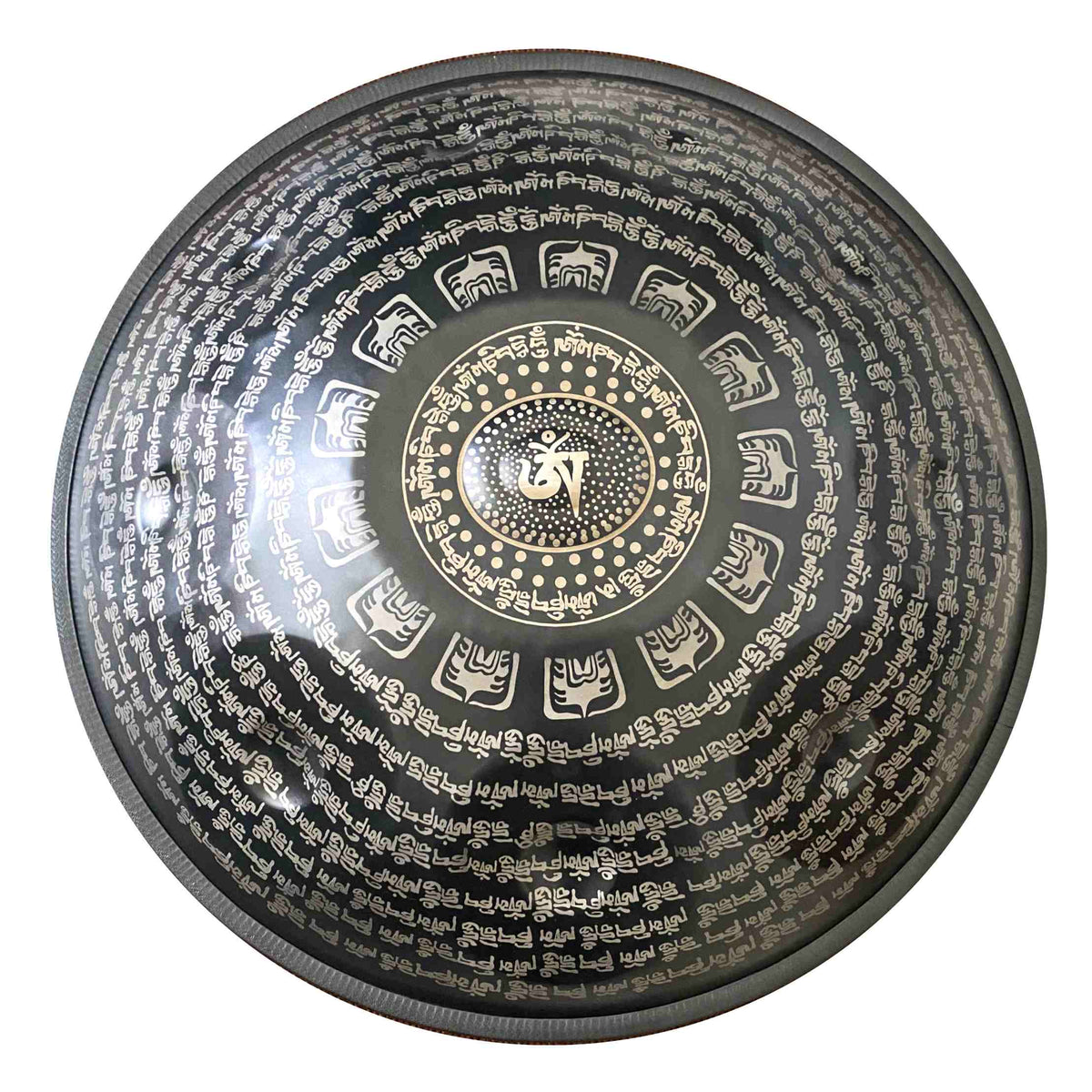
The Cosmos Handpan - Tantra Tibetan Series exemplifies meticulous craftsmanship and attention to detail. This handpan series offers various styles and tunings, including D kurd-440HZ, D kurd-432HZ, D Celtic-440HZ, and D Celtic-432HZ. Let's explore the key features that make this handpan series stand out:
Tunings and Number of Notes
The Cosmos Handpan comes with different tuning options to cater to diverse musical preferences:
- D kurd-440HZ/D kurd-432HZ: Available with 9, 10, or 12 notes, providing a wide range of melodic possibilities.
- D Celtic-440HZ/D Celtic-432HZ: These tunings offer unique tonalities that are ideal for various musical genres.
Size and Dimensions
The dimensions of the Cosmos Handpan are carefully designed to enhance its playability and sound projection:
- Diameter: 22 inches
- Height: 10.2 inches
These dimensions strike a balance between portability and acoustic performance, making the handpan suitable for both solo performances and ensemble settings.
Fast Delivery and Customization
Another notable feature of the Cosmos Handpan is its quick delivery time. Despite the intricate craftsmanship involved, these handpans are available for fast delivery within just 7 days. This rapid turnaround time is particularly beneficial for musicians who need their instruments promptly.
The Making of a Handpan: A Step-by-Step Process
Creating a handpan involves several intricate steps, each contributing to the instrument's final sound and appearance. Here’s a brief overview of the handpan-making process:
1. Metal Selection and Preparation
The process begins with selecting high-quality metal sheets, typically stainless steel. These sheets are then cut into the desired shape and size, ensuring they meet the specifications for the handpan.
2. Shaping the Hemispheres
The metal sheets are hammered into a dome shape, forming the top and bottom hemispheres of the handpan. This step requires precision and skill to ensure the metal is evenly shaped and free of imperfections.
3. Creating the Tone Fields
The top hemisphere is marked with the locations for the tone fields. These areas are then carefully hammered and tuned to produce specific notes. Each tone field is calibrated to resonate at the correct pitch, a process that requires a keen ear and extensive experience.
4. Assembling the Hemispheres
The top and bottom hemispheres are glued together using a strong adhesive. This step must be done with care to ensure a tight seal and proper alignment of the two halves.
5. Final Tuning and Finishing
Once assembled, the handpan undergoes a final tuning process to ensure all notes are accurately pitched. The instrument is then polished and finished to enhance its appearance and protect the metal surface.
Factors Influencing Handpan Prices
Handpans can vary significantly in price, with factors such as material, craftsmanship, and brand reputation playing crucial roles. Based on the information provided:
- Price Range: Handpan prices can range from a few thousand dollars to over a hundred thousand dollars. For example, small mobile stone crushers mentioned in reference articles have prices ranging from $7,500 to $8,000 for a production capacity of 20-300 tons/hour.
- Specific Models and Prices: The price of a portable jaw crusher can range from $110,000 to $113,000, while another mobile crusher model is priced at $90,909.
- Factors to Consider: When purchasing a handpan, factors such as production capacity, efficiency, after-sales service, and brand reputation should be considered alongside price.
Choosing the Right Handpan for You
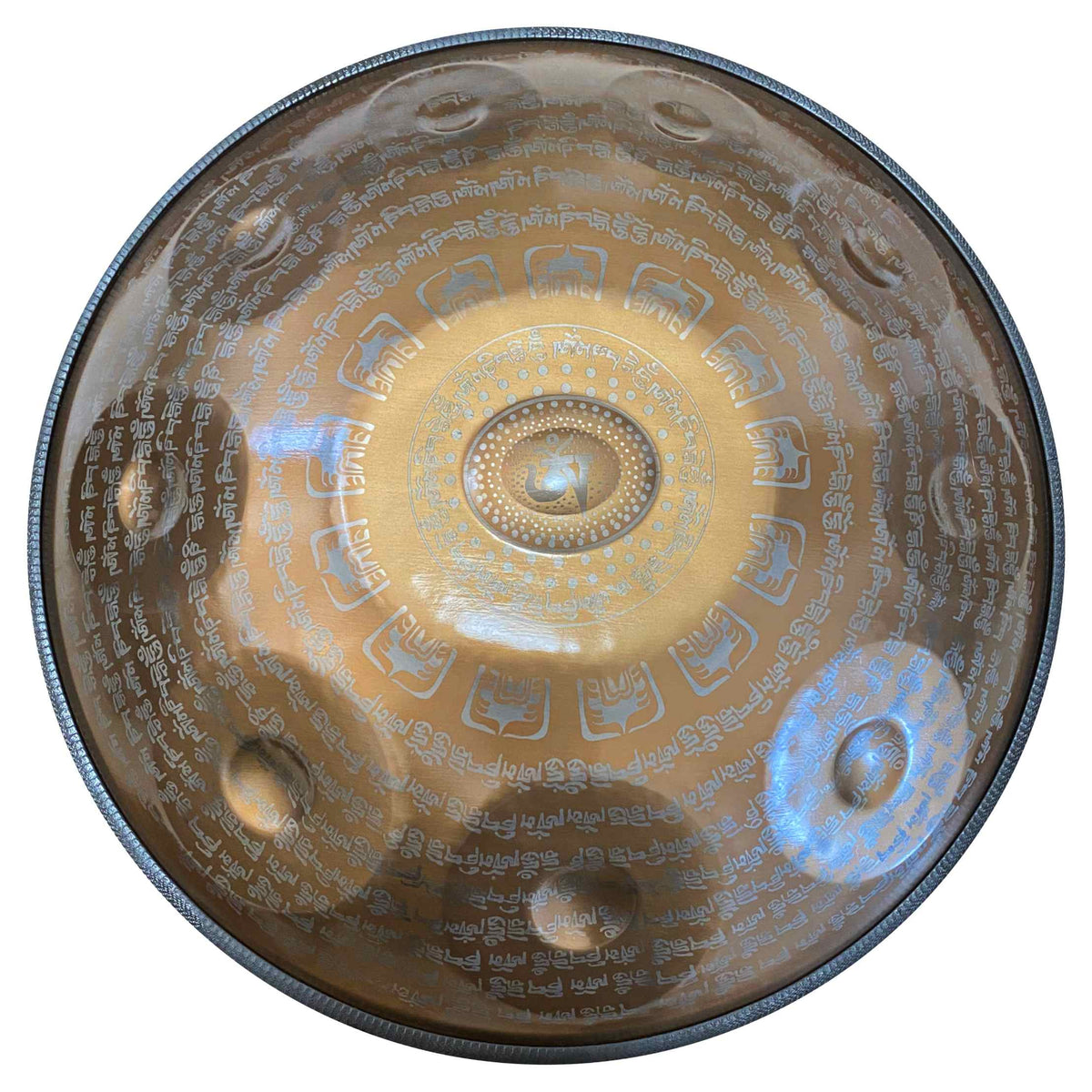
Selecting the right handpan involves considering several factors, including your musical preferences, budget, and playing style. Here are some tips to help you make an informed decision:
1. Determine Your Musical Needs
Consider the type of music you want to play and the sound characteristics you desire. Different tunings and note configurations offer unique tonalities, so choose a handpan that aligns with your musical goals.
2. Evaluate Material and Build Quality
Look for handpans made from high-quality materials like stainless steel, which offer durability and excellent sound quality. Check for craftsmanship details such as even shaping, precise tuning, and a smooth finish.
3. Consider the Brand Reputation
Research the brand and read reviews from other musicians. Established brands with a reputation for quality craftsmanship are more likely to produce reliable and high-performing handpans.
4. Assess the Price and Value
While price is an important consideration, it's essential to evaluate the overall value of the handpan. A higher-priced instrument may offer better sound quality, durability, and craftsmanship, making it a worthwhile investment.
Conclusion
The handpan is a remarkable instrument that combines intricate craftsmanship with high-quality materials to produce its enchanting sound. Understanding the materials and construction process behind handpans, such as the Cosmos Handpan - Tantra Tibetan Series, can help you appreciate the artistry involved and make an informed decision when purchasing one.
Whether you are a seasoned musician or a beginner, choosing the right handpan can enhance your musical journey and provide endless hours of enjoyment. Consider factors such as material, craftsmanship, tuning, and brand reputation to find a handpan that resonates with your musical aspirations. With the right handpan, you can create beautiful melodies and explore the captivating world of handpan music.


